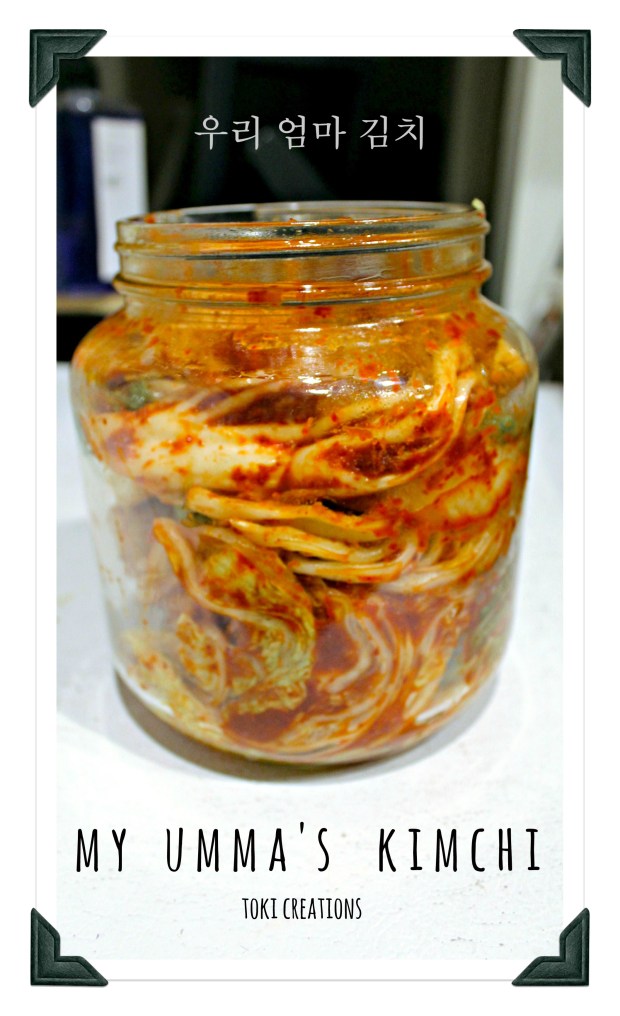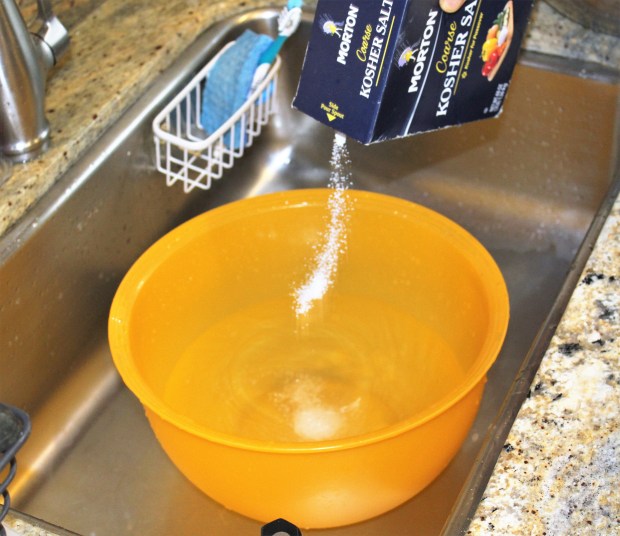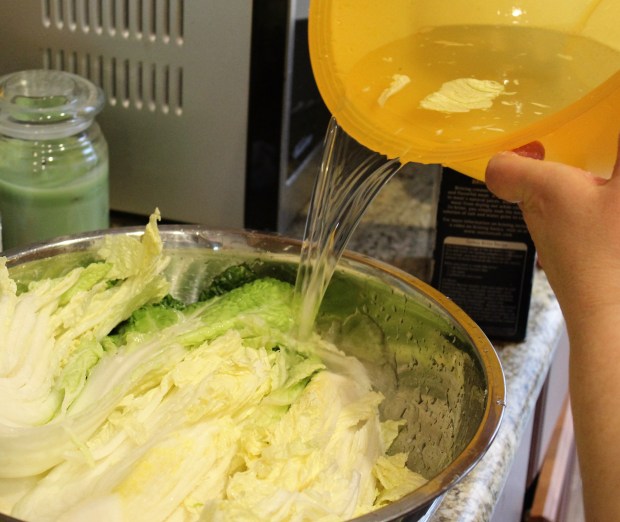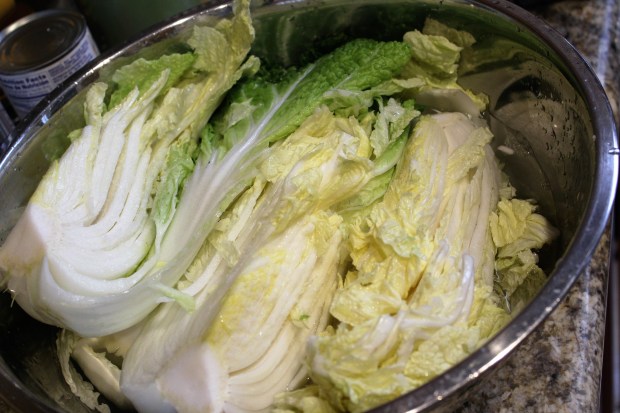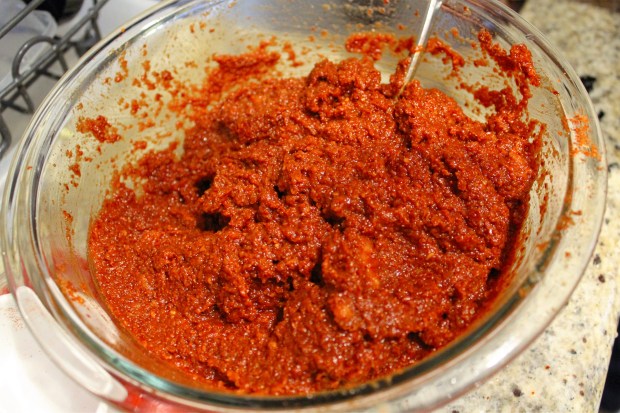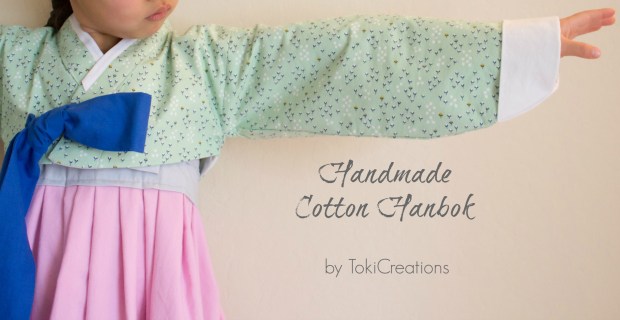 Every year at the new cycle of the lunar calendar, there ensues in our household, a discussion between my Korean self and my Chinese husband about the ‘political correctness’ of calling the New Year holiday “Chinese New Year” vs. “Lunar New Year” (instigated by me, of course). My husband is all for calling it “Chinese New Year” which is not THAT big of a deal, since the Chinese do celebrate it so extensively, (but then it sort of is) so I’m left wondering why my children are bringing home art and “Times” pamphlets from school solely about “Chinese” New Year and how it’s celebrated by the Chinese, when there are over 20 other countries that celebrate it as well. But I’m not here to start a debate on one or the other, we’ll save that for another time. I AM here to share how my latest sewing project has turned out and I think they turned out nicely, if I say so myself.
Every year at the new cycle of the lunar calendar, there ensues in our household, a discussion between my Korean self and my Chinese husband about the ‘political correctness’ of calling the New Year holiday “Chinese New Year” vs. “Lunar New Year” (instigated by me, of course). My husband is all for calling it “Chinese New Year” which is not THAT big of a deal, since the Chinese do celebrate it so extensively, (but then it sort of is) so I’m left wondering why my children are bringing home art and “Times” pamphlets from school solely about “Chinese” New Year and how it’s celebrated by the Chinese, when there are over 20 other countries that celebrate it as well. But I’m not here to start a debate on one or the other, we’ll save that for another time. I AM here to share how my latest sewing project has turned out and I think they turned out nicely, if I say so myself.

My “A” has long since grown out of her Hanbok (Korean dress) and my “C” probably wore her First Birthday Hankbok for the last time last year. Last Lunar New Year 2016, my A wore her Chinese dress and my C wore her Hanbok, which nicely represented their Korean and Chinese heritage. This year, the girls wore their Chinese dress on Saturday and wore their Korean Hanboks on Sunday. I’d been wanting to make a hanbok for my girls for years now, but never got around to tracking down a good hanbok pattern until this past Christmas season when I pulled the trigger and bought a Korean Dress pattern book on Etsy. It was mailed to me in California from South Korea and it took about 2 weeks to get the book. I bought it here on Etsy

I offered to make a Korean boy’s outfit for my son but he wouldn’t have it. He said he would never, ever wear it… makes my life easier. He also refused to wear a Chinese jacket sent from his grandpa in Hong Kong… But what can you do? You move on and make cute things for the girls while they’ll still wear it.

I love the bright and vibrant color combination of C’s hanbok (right) with the little floral design top. Hanboks are traditionally more vibrant in color and I wonder if I should have picked a bright, mustardish- yellow for A’s hanbok skirt (left) instead of pink to go with her mint top.
Did you notice that the girls’ hanbok bows are on opposite sides? I made C’s hanbok first (left, below) and accidentally reversed the front bodice pattern pieces and ended up having to put the tie on the incorrect side. I didn’t have enough fabric to fix the mistake so I figured I would just finish it and no one would really notice… unless you put side-by-side photos of them together like so…
 So the mint/pink Hanbok has the correct tie placement on the right side of the Jogori (top) with the 1-bow pointing to the left. (Yes, it does matter, but let’s just assume for C’s hanbok it doesn’t)
So the mint/pink Hanbok has the correct tie placement on the right side of the Jogori (top) with the 1-bow pointing to the left. (Yes, it does matter, but let’s just assume for C’s hanbok it doesn’t)

This is the skirt portion of the hanbok that you wear under the Jogori (top). It’s basically a wrap skirt/dress and you bring the ties to the front and tie to secure.

The pattern book is all in Korean but it has good step-by-step photos that illustrate each step that made it fairly easy to follow along. They do use specific vocabulary associated with the pieces of Hanbok that I had to look up, and the book does have a handy picture chart with labels and their corresponding names.

I think I got the hair right… I recall from watching Korean dramas (yes, Korean dramas, an excellent source) set in the old Joseon time periods usually having a small braid on the side, woven into one long braid in the back for girls and I think it was buns for married women. Regardless, the girls looks adorable with their braids and hanbok.

A and C tried to convince me to wear my hanbok to church with them, but I didn’t really want to wear my hanbok from my wedding (which comes with a huge petticoat) to 3 hours of church. Maybe next year girls… and that’s a BIG MAYBE.
Thanks for reading and Happy Chinese, Korean, Lunar New Year !!!
-Flora




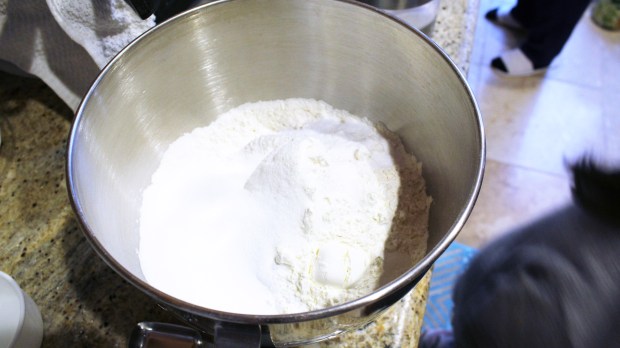 In a large mixing bowl, mix together the flour, baking powder, yeast, sugar, salt, and dry milk powder.
In a large mixing bowl, mix together the flour, baking powder, yeast, sugar, salt, and dry milk powder.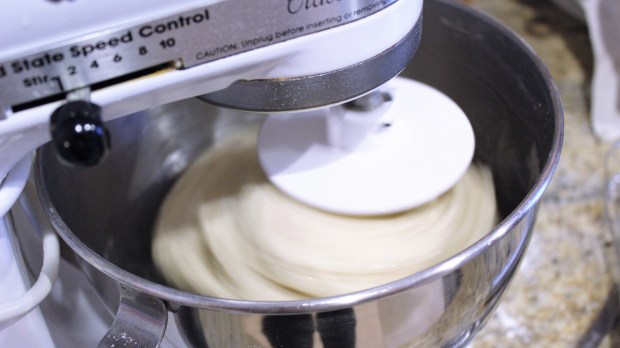 Add the warm water and mix/knead until dough forms. You can use a stand mixer with a dough hook attachment. Once you have a ball of dough, add in the oil and knead until you have a nice, shiny dough that isn’t sticky.
Add the warm water and mix/knead until dough forms. You can use a stand mixer with a dough hook attachment. Once you have a ball of dough, add in the oil and knead until you have a nice, shiny dough that isn’t sticky. Divide the dough into little balls (60 gram balls, about the size of a golf ball). Place on a baking sheet lined with wax paper, cover with clean cloth and let rest for 15 mins.
Divide the dough into little balls (60 gram balls, about the size of a golf ball). Place on a baking sheet lined with wax paper, cover with clean cloth and let rest for 15 mins.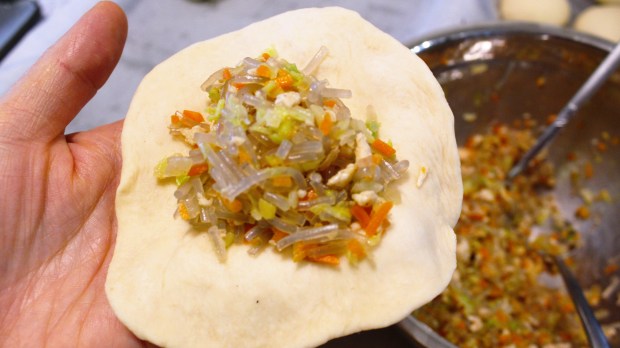 Flatten a ball of dough and fill with desired filling of choice. Pinch ends closed then place onto a square of wax paper. (If not using filling, just place ball of dough onto wax square)
Flatten a ball of dough and fill with desired filling of choice. Pinch ends closed then place onto a square of wax paper. (If not using filling, just place ball of dough onto wax square)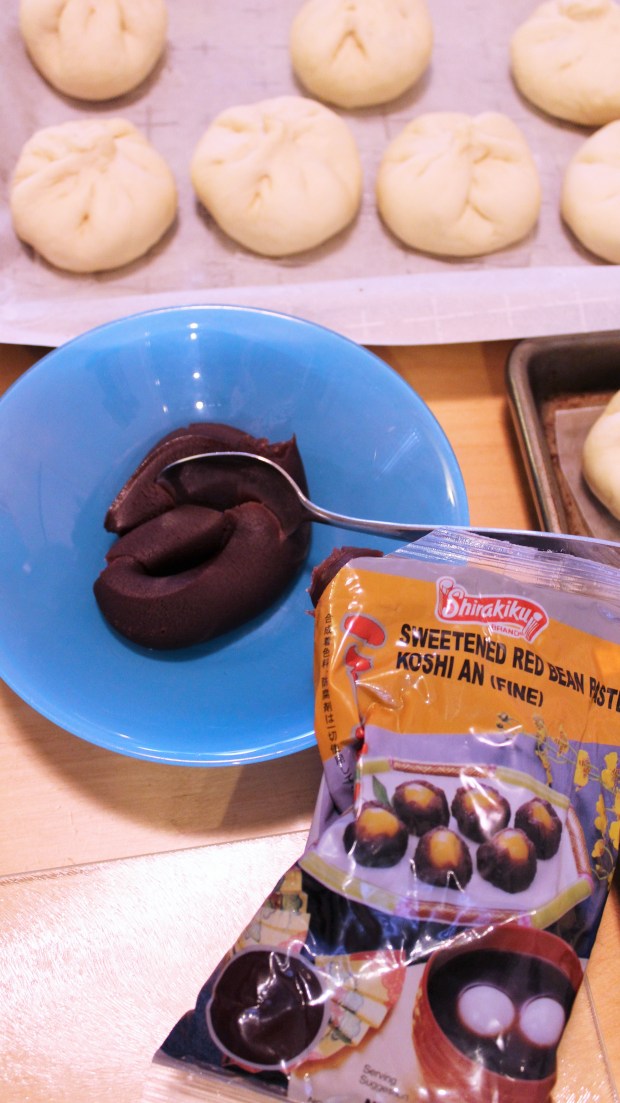
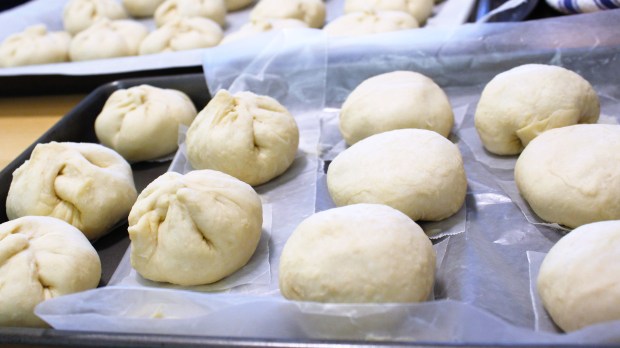
 Let dough rise in a warm place for 30 mins
Let dough rise in a warm place for 30 mins While the dough is rising, start heating your pot of water for the steamer over med high heat
While the dough is rising, start heating your pot of water for the steamer over med high heat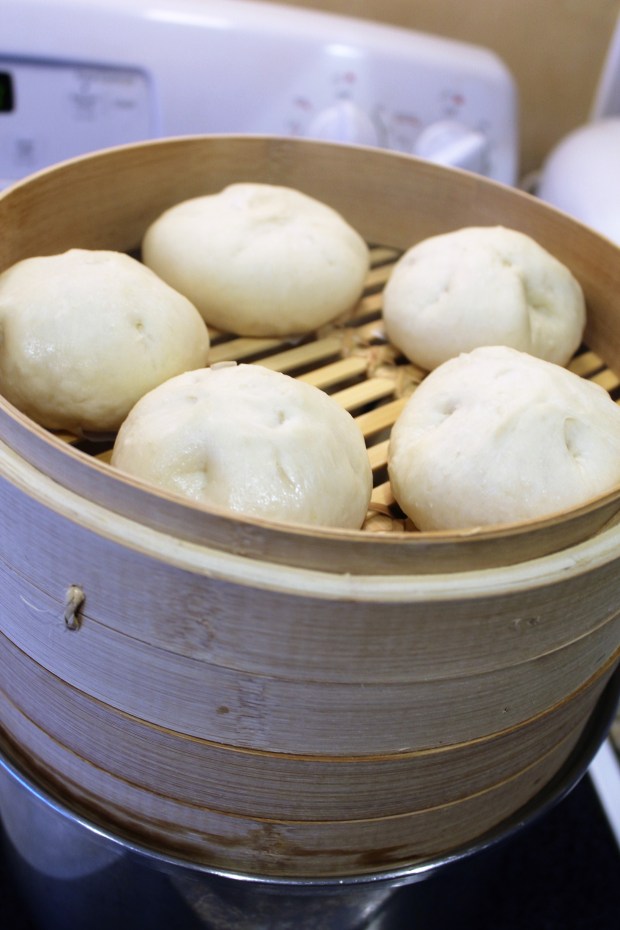 Place the dough into the steamer (don’t over-crowd, they will grow) once the water is boiling and you see steam rising. Steam for about 10 mins. Don’t open the lid while steaming.
Place the dough into the steamer (don’t over-crowd, they will grow) once the water is boiling and you see steam rising. Steam for about 10 mins. Don’t open the lid while steaming.

